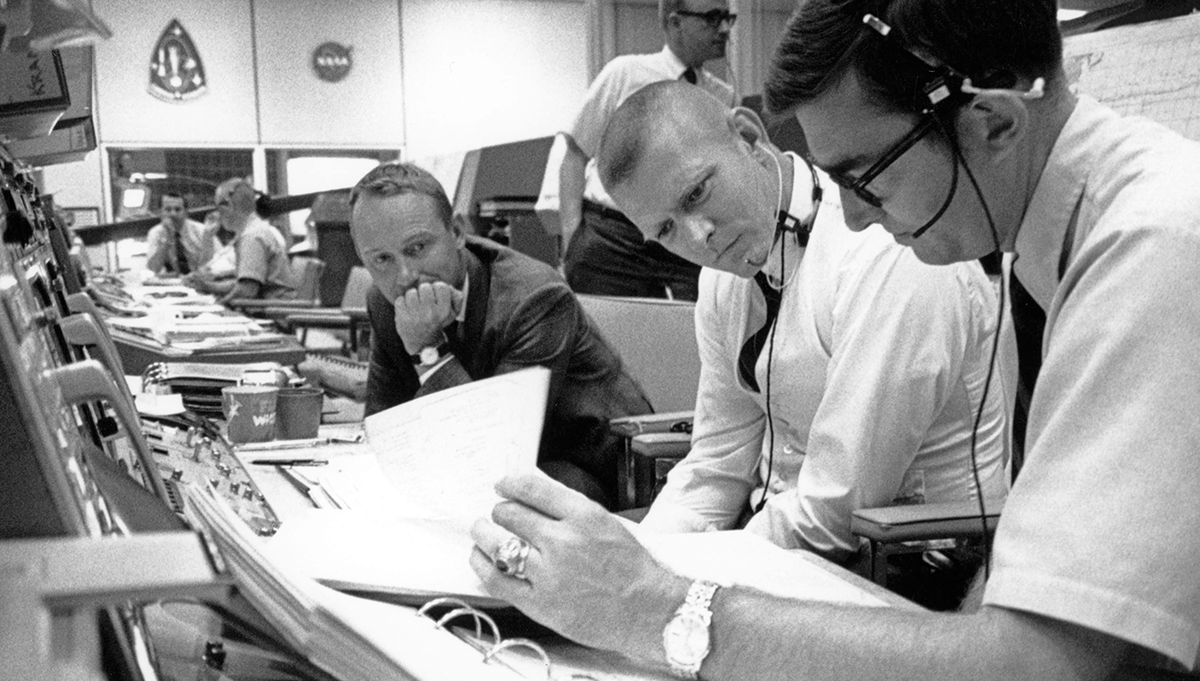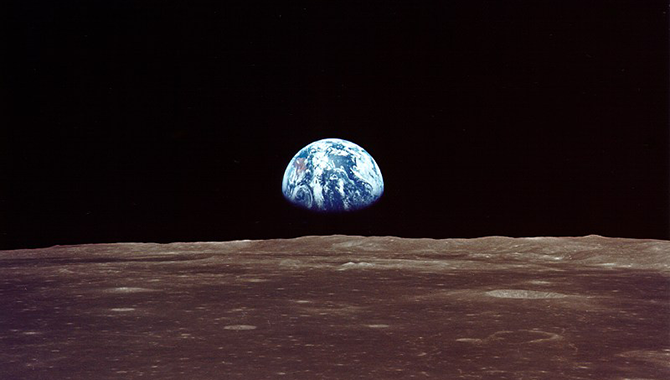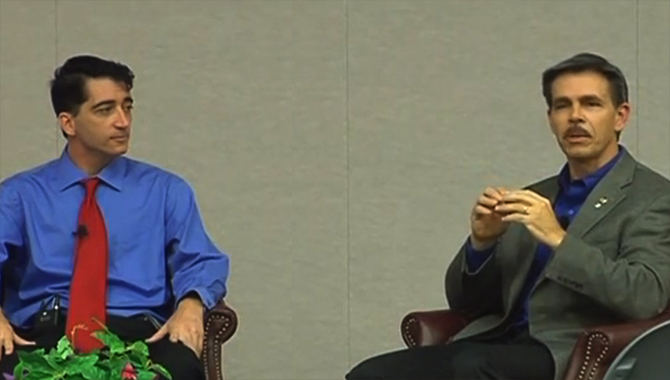
As NASA moves forward with Artemis, Andrew Chaikin presents 13 factors that made Apollo a success.
As the 50th anniversary of the first Apollo Moon landing approaches, NASA is focused on a return to the Moon as an important first step for a future mission to Mars. This confluence of history and future presents an ideal time to look back at the lessons learned during the Apollo program—some at a very high cost—to see how they can inform current efforts.
On June 3, APPEL Knowledge Services welcomed Andrew Chaikin, an accomplished science journalist and space historian, to an installment of the Virtual Project Management Challenge titled How to Get to the Moon: Success Lessons from Apollo. Chaikin is the author of A Man on the Moon, the Voyages of the Apollo Astronauts, a definitive account of Apollo that was the basis for Tom Hanks’ Emmy-winning 12-part HBO miniseries From the Earth to the Moon. The session was presented at NASA’s Langley Research Center, where it was also part of Safety and Health Awareness Week. It is available on demand.
“As our agency moves forward on an array of bold challenges and tremendous opportunities, such as the Artemis Program of landing the first woman and next man on the lunar south pole by 2024 and then building a sustainable presence as we move on to Mars, we’ll need to remind ourselves that safety, health and mission success all go hand in hand,” said Dr. David E. Bowles, Director of NASA’s Langley Research Center, introducing Chaikin.
Chaikin discussed what he calls “The Apollo Pyramid of Success,” a group of 13 factors that contributed to the towering achievements of the Moon landings. The pyramid, available here within Chaikin’s presentation, is founded on a clear goal and sufficient resources and topped by the ability to learn from mistakes and a small amount of simple good luck.
The pyramid served as a framework for Chaikin to talk about the common denominator that he has found in his extensive research into many of NASA’s successes and failures.
“I am … a historian, and I’m here to tell you what the history has to tell us about success and failure,” Chaikin said. “And the counterintuitive thing that history has to tell us is that it’s not the rocket science that gets you. We all know how hard the technical aspects of space flight are, and nobody is going to contest that for a second. But what the history shows us is that there is another piece of the puzzle that we must pay attention to, and it’s the human behavior piece of the equation.”
Chaikin noted that Apollo was essentially a battle in the Cold War between the U.S. and the Soviet Union for global influence. “It was a way of fighting a battle in the Cold War without weapons, but instead with ingenuity, with minds, with passion, with engineering. And so, Apollo was funded like a war and in fact was kind of a unique event in our past.”
The culture of success created during Apollo by Robert R. Gilruth, the first director of NASA’s Manned Spacecraft Center, and his colleagues is not unique to the 1960s, however. “How do you describe that culture? Well, if I had to pick one word, I would say ‘trust,’ ” Chaikin said. He explained that the leadership of Apollo and the talented people working on the project shared a mutual trust that enabled decisions to be made as low on the organizational chart as possible.
As Chaikin worked up the levels of the pyramid, he discussed:
- The thinking style that General Sam Phillips and his cohorts brought to NASA in 1963 from the U.S. Air Force intercontinental ballistic missile program. (13-minute mark of the video above.)
- How an outside-the-box idea advocated by John C. Houbolt helped NASA meet Kennedy’s deadline. (17:18)
- The principal reason the Soviet Union didn’t beat the U.S. to the surface of the Moon. (22:29)
- The value of visibility and accountability. (27:10)
- Why it’s not enough for an organization to learn from mistakes. (29:42)
- How John Aaron knew what to do when lightning struck. (30:48)
Chaikin also presented a reverse pyramid of “Failure Ingredients” that includes closed-mindedness, groupthink and hubris. Illustrating his point with an image of a blindfolded tightrope walker, Chaikin said, “I like to think of spaceflight as a high wire act, because it’s that unforgiving, right? When you’re on the high wire, you can’t lie to yourself about whether you’re on top of it, whether you’re prepared. You know in your gut that one little slip and you can be history,” Chaikin said.
The blindfold represents the human behaviors ingrained in the subconscious mind that engineers and project managers must consciously override on a daily basis to achieve success. “The first one is something I call the ‘reality distortion field.’ This is an effect of cost pressure, schedule pressure, and/or political pressure, which is always with us. Those things warp our perception of reality.”
The VPMC session was viewed live by a record 874 people. To learn more about the Pyramid of Success and the Failure Factors, watch the session on demand. Also, more of Chaikin’s insights are available in episode 13, Apollo Legacies and Lessons Learned, of the APPEL KS podcast, Small Steps, Giant Leaps.









